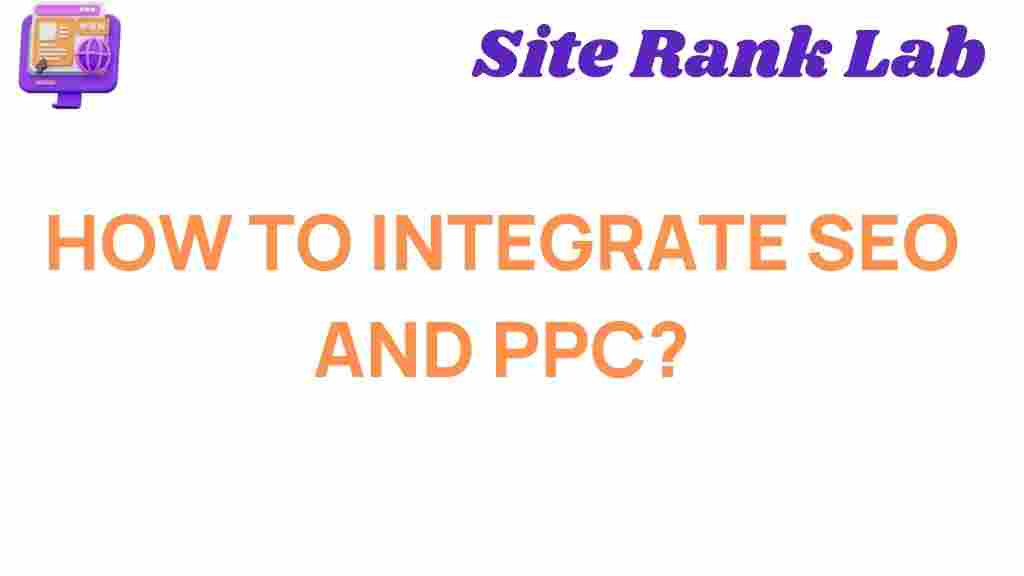Unlocking Success: How to Integrate SEO and PPC for Maximum Impact
In today’s competitive digital landscape, businesses must leverage every tool at their disposal to improve their online visibility. Two of the most powerful strategies in digital marketing are Search Engine Optimization (SEO) and Pay-Per-Click (PPC) advertising. While each of these strategies can drive traffic independently, integrating them can significantly enhance your overall marketing effectiveness. In this article, we’ll explore how to create a harmonious relationship between SEO and PPC, ensuring maximum impact on your digital marketing efforts.
The Importance of SEO and PPC in Digital Marketing
Before delving into how to combine these two strategies, let’s briefly discuss their individual benefits:
- SEO: Focuses on optimizing your website to rank higher in organic search results, driving organic traffic that can lead to increased conversions.
- PPC: Involves paying for advertisements to appear in search engine results, providing immediate visibility and traffic.
Understanding SEO
SEO is a long-term digital marketing strategy that involves optimizing your website’s content, structure, and technical aspects to improve its ranking on search engine results pages (SERPs). Key components of SEO include:
- Keyword Research
- On-page Optimization
- Off-page Optimization
- Technical SEO
- Content Quality
Understanding PPC
PPC advertising allows businesses to bid on keywords and display ads on search engines and other platforms. The primary goal is to drive immediate traffic to your website. Key aspects of PPC include:
- Keyword Targeting
- Ad Creation and Copywriting
- Bidding Strategies
- Landing Page Optimization
- Performance Tracking
How to Integrate SEO and PPC for Maximum Impact
Integrating SEO and PPC can create a powerful marketing synergy that enhances your online visibility and improves conversion rates. Here’s a step-by-step process to achieve this integration:
Step 1: Conduct Joint Keyword Research
The first step in integrating SEO and PPC is to conduct comprehensive keyword research. Identify keywords that perform well organically and those that drive traffic through PPC. Consider the following:
- Use tools like Google Keyword Planner, SEMrush, or Ahrefs to identify high-performing keywords.
- Analyze the competition for both organic and paid search results.
- Look for keywords with high search volume and reasonable competition.
Step 2: Create Unified Messaging
Ensure that the messaging in your PPC ads aligns with your SEO content. This consistency helps reinforce your brand message and improves user experience. Consider the following:
- Use similar keywords and phrases in both your PPC ads and your website content.
- Ensure that the value propositions in your ads are reflected in the landing pages.
- Maintain a consistent tone and style across all platforms.
Step 3: Optimize Landing Pages for Both SEO and PPC
Landing pages are crucial for both SEO and PPC. To maximize their effectiveness:
- Ensure landing pages are optimized for relevant keywords.
- Include clear calls-to-action (CTAs) to improve conversion rates.
- Use A/B testing to experiment with different layouts and messaging.
Step 4: Analyze Performance Metrics
To gauge the success of your integrated strategies, regularly analyze performance metrics such as:
- Click-through rates (CTR)
- Conversion rates
- Cost per acquisition (CPA)
- Return on investment (ROI)
Utilize tools like Google Analytics and Google Ads to track and evaluate these metrics effectively.
Step 5: Adjust and Optimize Strategies
Based on your performance analysis, continuously adjust and optimize your SEO and PPC strategies:
- Refine your keyword list based on performance data.
- Update ad copy and landing pages to reflect the most effective keywords and messaging.
- Experiment with different bidding strategies in PPC to find the most cost-effective options.
Troubleshooting Common Issues
While integrating SEO and PPC can yield significant benefits, you may encounter some challenges. Here are troubleshooting tips to address common issues:
Issue 1: Low Conversion Rates
If you notice low conversion rates from either your SEO or PPC campaigns, consider the following:
- Analyze your landing pages for clarity and relevance.
- Ensure that your CTAs are compelling and easy to find.
- Test different ad formats and messaging to see what resonates with your audience.
Issue 2: High CPC in PPC Campaigns
If your cost-per-click (CPC) is increasing, try these solutions:
- Refine your keyword targeting to focus on long-tail keywords.
- Improve your Quality Score by optimizing ad relevance and landing page experience.
- Consider adjusting your bidding strategy to maximize your budget.
Issue 3: Poor Organic Rankings
If your SEO efforts aren’t yielding results, implement the following strategies:
- Audit your website for technical issues that may hinder SEO performance.
- Enhance content quality by adding valuable information and optimizing for user intent.
- Increase your backlink profile through outreach and content marketing.
Conclusion
By integrating SEO and PPC, businesses can unlock unprecedented levels of success in their digital marketing efforts. This marketing synergy not only enhances online visibility but also improves conversion rates, making your marketing strategies more effective overall. To stay competitive in the digital landscape, consider implementing the strategies outlined in this guide.
For further reading on effective digital marketing strategies, visit this resource. To learn more about optimizing your PPC campaigns, check out this article.
This article is in the category SEO and created by SiteRankLab Team
